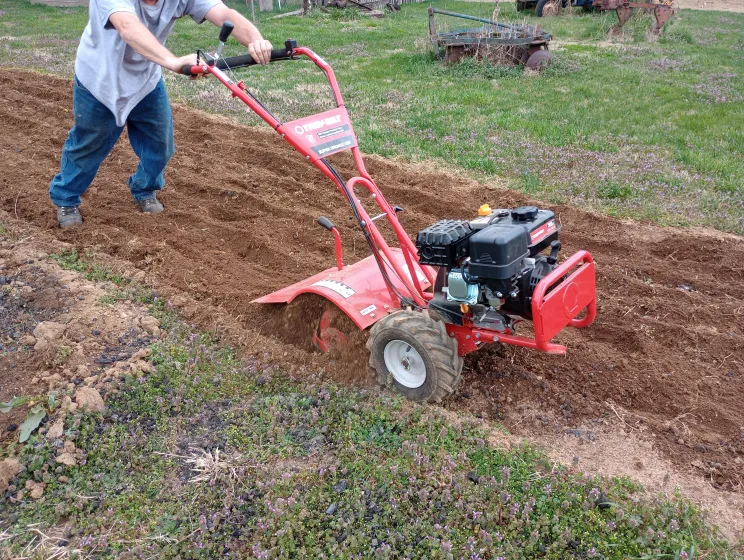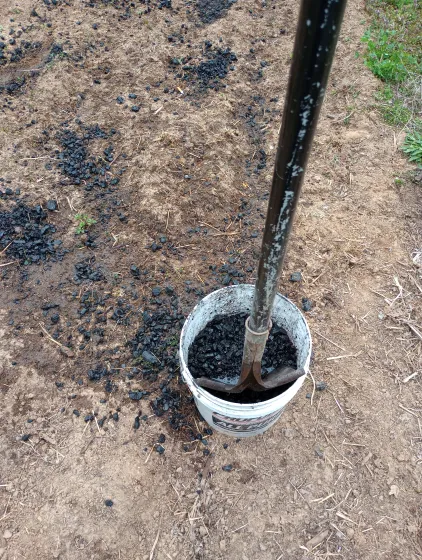Gardening can always be an amazing adventure, with constantly changing ideas. What may work to help grow some plants during a season might not work for the next set of plants.

Always remember that ideas help us in our garden, but your garden, your soil, and your environment are almost always different for you than they are for others. It helps to always do a little research in your area and do a soil biology test and mineral testing to know the lack of or the available minerals in your soil.
Now, onto some gardening projects that most people can accomplish for free or on a low budget.
#1 TILL OR NOT TO TILL?
If you are on a budget, you can not afford to BUY SOIL, right? Like those doing raised beds? Or those people doing NO-TILL. It can get very costly to BUY SOIL.
Where TILLILING has gotten a bad name in gardening is from the commercial farming industry. who for years have deep tilled using a moldboard plow or other plows that get deep into the soil and bring it to the top. Then they cover the soil in glyphosate or other chemicals that kill the soil biology.
Does some soil biology get harmed when tilled? sure. But it also comes back and rebuilds. and replenishes the soil, especially when we add help. Adding the biology back in, adding beneficial nematodes.
I have found fish emulsion has been a great addition to helping feed the plants and get the soil healthier. Fish emulsion, inoculated biochar, is also a great way.
As can be seen in the pic below, I used the tiller to till the biochar into the soil. I only till around a max of 8 inches deep. I also remove most all the weeds’ roots tilled up.
I rake them to the edge like a border so the weeds can compost down and help have swells. But going to be planting insect-repelling flowers around the garden in the border.


#2 Raised Beds,
As may be seen in the above pic at the top. Raised beds are made from leftover wood from sawmills. can get them for 20$ a load, no matter the side of the load. truck or trailer or dump truck. 20$ is what the local sawmill charges. I get a guy to bring me a dump truck load for 80$ that’s his delivery plus the price of wood. It stacks about 2-3 cords of wood per load. These are leftovers from winter, We heat the house with a barrel wood stove. To heat the house for the winter, it costs us anywhere from $80-$160 per season. We do not use electric heaters. This last winter, we only used 1 load. But someone could get 1 dump truck load and prob build 20- 30 beds similar to what we have here for $80. Yeah, lots of savings going this route. And when you’re done with it, have a bonfire, or when a block rots, you just replace it.
So the leftover wood is being used to build the raised beds and also to add some wood for fill to be similar to a hugelkultur. As we add leaves, weed cuttings, and other organic materials before filling with compost soil. For 2 scoops, 1 pickup truck load, I can get a load of what they call mushroom compost for $60 a load. $30 a scoop. That would be similar to buying more than 50 bags of soil from a store. These methods save a lot of money, depending on the scale of someone’s raised garden beds. I will be making a video of this project to show more in-depth for people, and will post the link to the video here.
#3 Trellis,
As you can kind of see in pics, our trellis is made using sticks and branches from trees felled, clearing some overgrown areas on the land. Then built similar to a wattle fence. But tied with a string in some places to help hold the sticks. Will post picture below showing how I used OLD recycled barbed wire as a trellis for the luffa. Aquired the barbed wire for free from doing a fence job for a customer, who replaced an old barbed wire fence with a new woven wire fence. So far, we have spent $0 on trellis, as the string used was even acquired for free. We used barbed wire cut-offs to twist them around the branches to help hold the wire to the branch.
